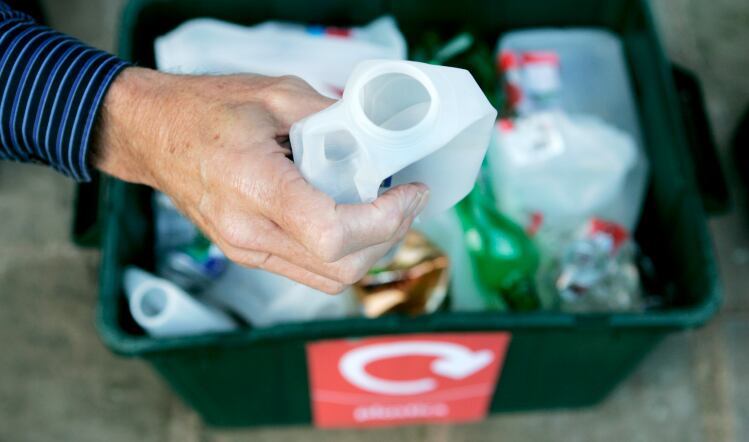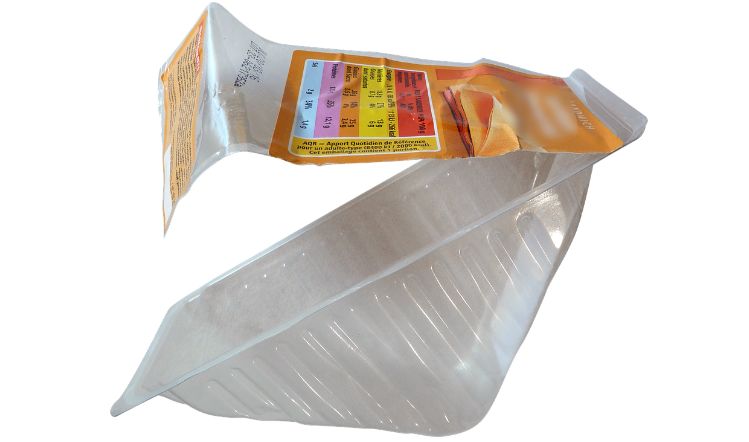Following the Chancellor’s Budget announcement that a plastic packaging tax will come into force from April 2022 – which will see businesses whose products have less than 30% recyclable material being charged £200 per tonne – food and drink manufacturers are facing even more pressure in what is the tip of the financial time-bomb for the industry.
Put simply, the financial burden is now too high for manufacturers to continue the way they have been.
While a handful of food and drink manufacturers are addressing this fundamental change in a meaningful way, many have yet to grasp the extent to which the costs and pressure associated with plastic packaging will fundamentally threaten their current business model. So what exactly does the industry need to know?
1) Rising cost burden of current regulation
Packaging Recovery Note (PRN) charges are the compliance fees that companies must pay towards the collection and disposal of plastic packaging waste they put on the market.
On its own, the per-tonne increase of plastic compliance – from an average of £50 in 2017 to over £400 in 2019 – is eye-catching enough. When these costs are modelled for large and mid-sized businesses it is calculated that for every £1,000 a company was spending on plastic compliance in 2017, they are now spending over £8,000.
The cost of these PRNs has effectively risen from a level many businesses might have considered a manageable marginal cost of doing business, to a major cost centre.
2) New regulations will further increase costs
The Extended Producer Responsibility (EPR) rules, due to go live in less than three years’ time, will force producers and users of packaging to pay the full net cost of collecting, reprocessing and recycling packaging to local authorities in the UK.
By the government’s own calculations, EPR is set to increase the cost of packaging compliance fees by an estimated 21 times what businesses were paying in 2017. There is also the new headline plastic packaging tax. However, the rules for this tax will provide a powerful advantage for businesses that reduce the amount of packaging they use, ensure it is made from the maximum recycled content, and that it is universally recyclable.
3) Supply chain and investor pressure
In the face of higher costs – as well as changing consumer demand and the reputational impact of commercial and policy pressure on businesses to reduce the use of non-recyclable plastics – businesses are exerting their own influence on supply chains to reduce the use of plastic packaging. For example, initiatives from large retailers who want their suppliers to remove or reduce packaging put product manufacturers unable to meet these targets at risk of delisting or reduced orders.
At the same time, with the growing power of Environment, Social and Governance responsible investment, investors are increasingly aware of the impact of plastics and packaging on businesses’ future viability.
Taking these three major developments into account, food and drink manufacturers need to demonstrate the necessity and sustainability of their products so as not to lose out to other, emerging technologies and alternatives in the system. This may involve reformulation, reengineering and repositioning of current products in order to, for example, be able to prove they are 100% recyclable and made from maximum recycled content.
If this is not done now, in the normal business cycle, manufacturers risk rapidly declining sales and stranded assets as customers prepare for the forthcoming legislation.
However, there are five key actions that food and drink manufacturers should specifically take to turn this potential disruption into an opportunity:
1) Understand the risks to your business today
The first step is to evaluate the impact of current and future changes to packaging on your business. This requires establishing the implications of the evolving packaging landscape. You will need accurate data on all the packaging you currently use – including types of materials, quantities, recyclability and recycled content – which should be mapped against the current PRN system and proposed legislative changes so you can understand your exposure to risk.
You may not be able to model this in fine financial detail, but the data you gather and the gaps you find should provide a picture of the potential risks your business faces going forward.
2) Join up your packaging and business strategies
Packaging strategy, business strategy and future competitiveness are now intertwined. Understanding this link and how it applies to your business opens up vital opportunities to reduce costs and add value.
For many organisations this requires changing the way they think about packaging. Instead of focusing on cost management and compliance, they need to think about how product use, disposal and production methods can be adapted for lower costs and reduced consumption.
Your goal should be to bring colleagues, consumers, business customers and campaigners on the journey with you: educate others on what you have done.
3) Lead from the top and take a company-wide approach
Done the right way, efforts to reduce plastics and packaging require change across the business and extend to relevant suppliers and partners. Identifying and prioritising these changes needs top-down support. It also requires people in different functions, from product managers to packaging specialists, operations, finance and marketing, to work together.
Do not leave an individual department or functional team to drive change on their own; it will fail without the support of others. A shift to greater sustainability will be a journey which takes time for every organisation. Telling your story along the way is going to be vital for your success.
4) Avoid knee-jerk reactions
As plastics activism has grabbed the headlines so too have the number of businesses going for ‘quick fixes’ around packaging, typically swapping plastic for another material perceived to be more eco-friendly. The risk of this approach is a failure to reduce overall environmental impact.
If the goal is to make sustainable changes to the business then it is imperative to research alternative packaging suppliers, understand the limitations and opportunities offered by new technologies, speak to reprocessors who will have to recycle the packaging, look for best practice, and understand how the market is evolving.
5) Don’t try to do it on your own
A key facet of the packaging revolution is the need for businesses to communicate and collaborate within supply chains and across sectors as the entire system changes. As such, this is not something that should be navigated or tackled by a business working alone. Companies should be outward-looking and open-minded, ready to forge new relationships with industry peers and partners, and to cooperate on areas of shared challenge. It is also important to foster effective relationships with government and non-governmental organisations. Constructive dialogue with these stakeholders can be a source of competitive advantage as it keeps your organisation in discussions and demonstrates accountability ahead of negative campaigns.
Dom de Ville is senior consultant at international sustainability consultancy Sancroft, which works with some of the world’s leading companies to improve their environment, ethical and social impact




